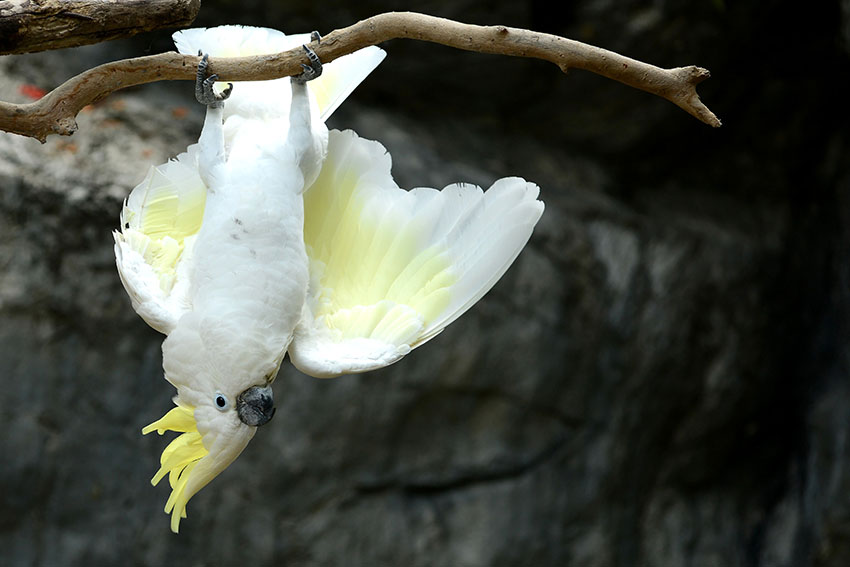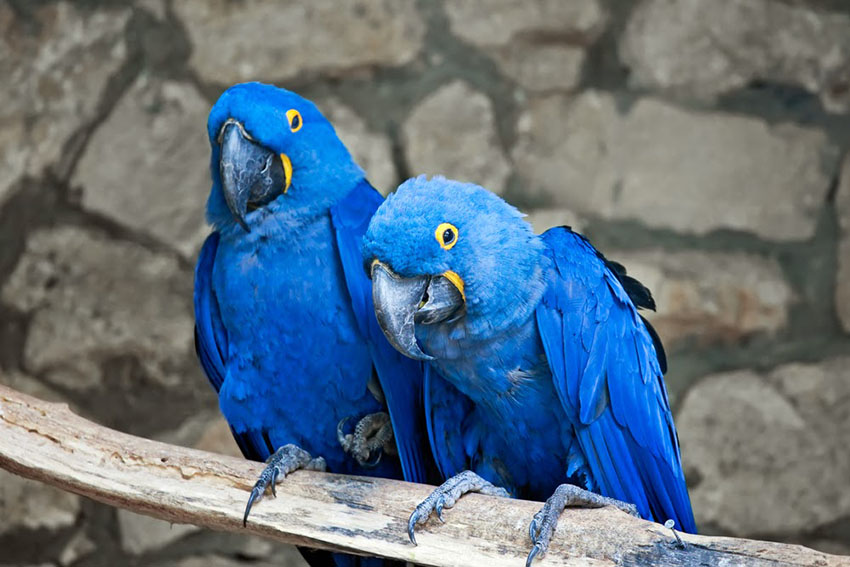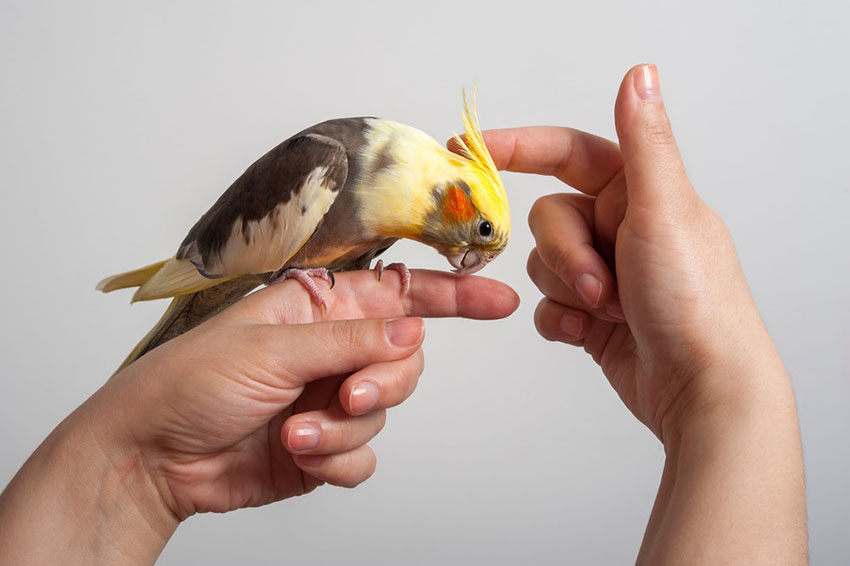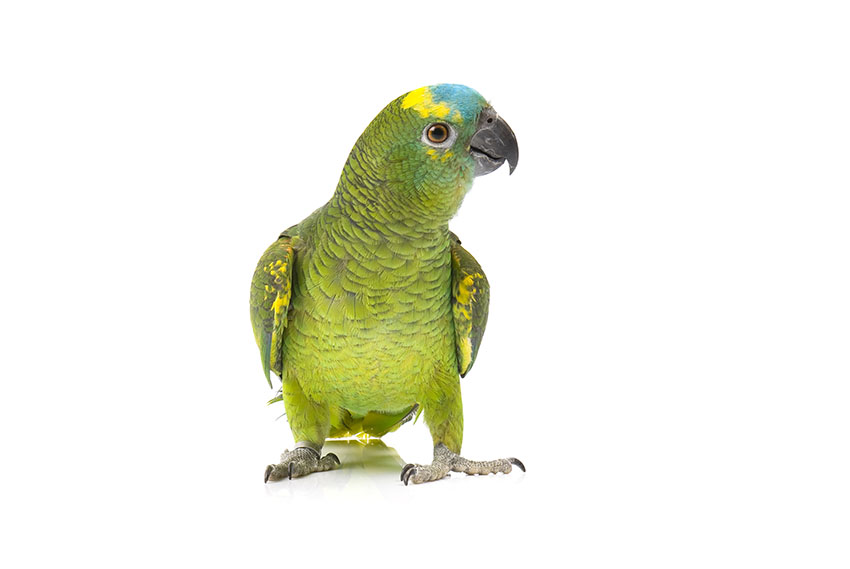Because there’s no one-size-fits-all description of parrots, you will need to weigh up the pros and cons of individual species. Here are a few things to bear in mind:

Sulphur-Crested Cockatoos are beautiful but messy birds
- Many larger species live a long time - up to 70 years, or even more. Smaller birds such as budgies and cockatiels can still live as long as a healthy pet dog - 15 years or so. So, for example, if you buy a large parrot as a retirement present, bear in mind that the bird is very likely to outlive its owner.
- African Greys and Cockatoos are messy birds, with lots of ‘dander’ (a type of avian dandruff). This makes them a poor choice for anyone who suffers bird allergies - they are more liable to cause asthma and sneezing than other parrots.
- Lories and Lorikeets need a fruit and nectar diet, which makes their droppings very liquid, and their cages, as a consequence, very messy. They are surprisingly good at squirting it out between the bars too!
- Many species - notably the Amazons - become very ‘squawky’ if they do not receive enough attention from their owners.
- Macaws tend to turn nasty if they do not receive enough attention; and some older birds seem to develop a mean streak regardless of how you treat them.
- Many species, including Macaws, will pluck themselves when stressed, and stress can be anything from too much light or noise, to overcrowding and frustrated mating urges.
How Much do Parrots Cost?
Prices vary with species, as you would imagine:
- You can buy a small bird such as a budgerigar, cockatiel or lovebird for as little as £15, even less
- Lories and Lorikeets range from £50 to £200
- African Greys will cost between £400 and £800
- Senegal Parrots will normally set you back between £150 and £300
- Amazon parrots range from £350 to £700
- Pionus and Caiques will cost you £150-£300
- Small Conures range from £75 to £150
- Larger Conures and smaller Macaws are available for between £150 and £400
- Larger Macaws start at £500, and commonly cost over £1000
- Cockatoos range from £500 to £1500 or more

A big parrot like a Hyacinth Macaw doesn't come cheap
Fostering a Parrot
Fostering is a good option if you want to ‘test the water’ without making the time and money commitment of owning a bird for the next few decades. Because larger parrots live so long, they often outlive their owners; or a previous owner is no longer able to cope. These birds are often put out for fostering - check locally for availability. If, after six months with the bird, you decide not to go ahead with the plan of parrot keeping, there is no harm done.
Choosing a Parrot that will Talk
There is no guarantee that any individual parrot will become a great talker. The only guarantee of taking home a talking bird is if it’s already a proven talker when you buy it. By definition, this will mean buying an older bird, as they are unlikely to master speech before the age of three.

The Cockatiel's popularity is partly based on its talking ability
There are other ways of giving yourself a better chance of having a talkative avian companion. Males tend to talk more fluently than females. The following species are renowned talkers:
- African Grey (the greatest talkers, once they get the hang of it)
- Amazon Parrots
- Budgie (see our Budgerigar Guide elsewhere on this site)
- Cockatiel
- Cockatoos
- Macaws
- Quaker Parakeet
- Ring-necked Parakeet
It’s important to remember that there are no guarantees, when buying a young parrot, of ending up with a good talker. This should not matter - if your primary reason for buying a parrot is to have a talking pet, you should reconsider your priorities. Parrots have lots to offer as pets, and a non-talking bird can still make a fantastic, long-lived companion.

Many Blue-Fronted Amazons learn to talk
Parrot Leg Rings
Rings, or bands, are fitted to captive-bred birds soon after birth. They record the date of birth and details of the parrot’s origin. They are made from steel; but many breeders fit plastic ones too, recording details specific to that particular aviary. Some larger parrots are micro-chipped these days, like a pet dog or cat. The chips are the size of a rice grain and remain under the bird’s skin for life. When scanned they give a unique numerical code that identifies the bird as yours and no other.
Comments
There are no comments just yet